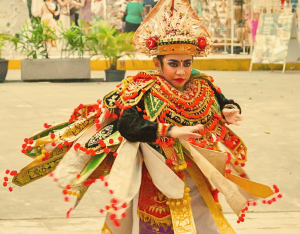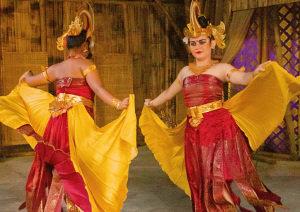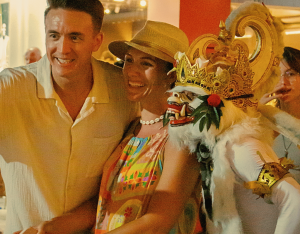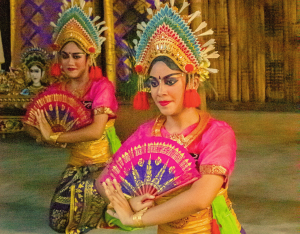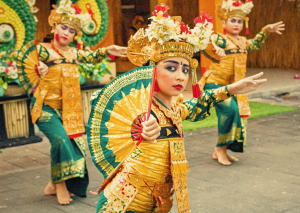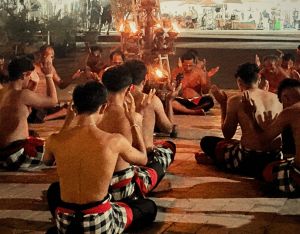Bali is more than just a beautiful island it’s a living stage of culture, where art and spirituality move in harmony. From the echo of bronze gongs to the elegant gestures of temple dancers, Balinese traditional arts are deeply rooted in ritual, belief, and identity. In this guide, we explore three pillars of Balinese culture: music, dance, and rituals and how they come together to create an unforgettable cultural experience. But what do these traditions truly mean? And how do they shape the way Balinese people live, celebrate, and express their faith?
The Sound of Devotion: Gamelan Music in Balinese Life
Balinese music revolves around the gamelan, a traditional ensemble composed of bronze percussion instruments, bamboo flutes, and rhythmic drums. Its mesmerizing sound can be heard throughout the island in temples, ceremonies, festivals, and cultural performances. This music is not merely a backdrop; it is the spiritual heartbeat of Bali. Each instrument in the ensemble plays a unique role. The gong marks the cycle of the music, the kendang (drum) leads the rhythm and transitions, while the gangsa (metallophones) produce fast-paced, interlocking melodies known as kotekan. Interestingly, gamelan has no conductor. Instead, musicians rely on intuition and group awareness, reflecting the Balinese principle of gotong royong, or collective cooperation.
The music itself ranges from slow and meditative to loud and celebratory, accompanying everything from temple rituals to welcoming dances for guests. It is dynamic, alive, and inseparable from the cultural rhythm of daily life.
The Language of Movement: Balinese Dance as Sacred Expression
Balinese dance is a visual expression of storytelling and spirituality. Every movement from the flick of a finger to the dart of an eye carries symbolic meaning. These dances are not merely performances; they are sacred offerings meant to communicate with the divine. Different dances serve different purposes. Ritual dances such as Rejang and Baris are typically performed during temple ceremonies and are considered highly sacred. On the other hand, entertainment dances like Barong and Kecak are rooted in mythological tales and are often featured in cultural shows for the public. There are also welcoming dances like Panyembrama, performed to greet and honor guests with elegance and beauty. Each dance is enhanced by the accompaniment of gamelan music, as well as elaborate costumes and golden headdresses that represent deities, nature, or mythical characters. Together, these elements transform each performance into a moving spiritual experience.
Rituals That Live Through Art
In Bali, ritual and art are deeply intertwined. The island’s spiritual life is expressed through daily offerings known as canang sari, vibrant temple festivals called odalan, and major holy days such as Galungan, Kuningan, and Nyepi. During these moments, art becomes a form of prayer and devotion. Dance is performed as a sacred tribute during temple anniversaries and full moon ceremonies, while gamelan music serves as a spiritual frequency that connects the soul with the divine. Visual elements such as costumes, masks, and decorations are not merely for show they carry layers of symbolism that honor gods, ancestors, and natural forces.
Where Art, Spirit, and Performance Unite
At Sawelas Nusantara, we bring these elements together music, dance, and ritual into one authentic cultural experience. Each performance is inspired by Bali’s sacred traditions and designed to connect you with the island’s artistic soul.
Join us for live shows, workshops, and cultural programs where you can see, hear, and feel the living arts of Bali. Whether you’re a first-time visitor or a culture enthusiast, we welcome you to explore the richness of Balinese heritage through immersive and meaningful performances.
📍 Visit Sawelas Nusantara at Bali Collection, Jl. ITDC Nusa Dua Lot BC, Benoa, South Kuta, Badung, Bali.
📅 Check our event schedule and discover Bali through its living traditions.
Experience the true heartbeat of Bali through its music, movement, and ritual spirit.
